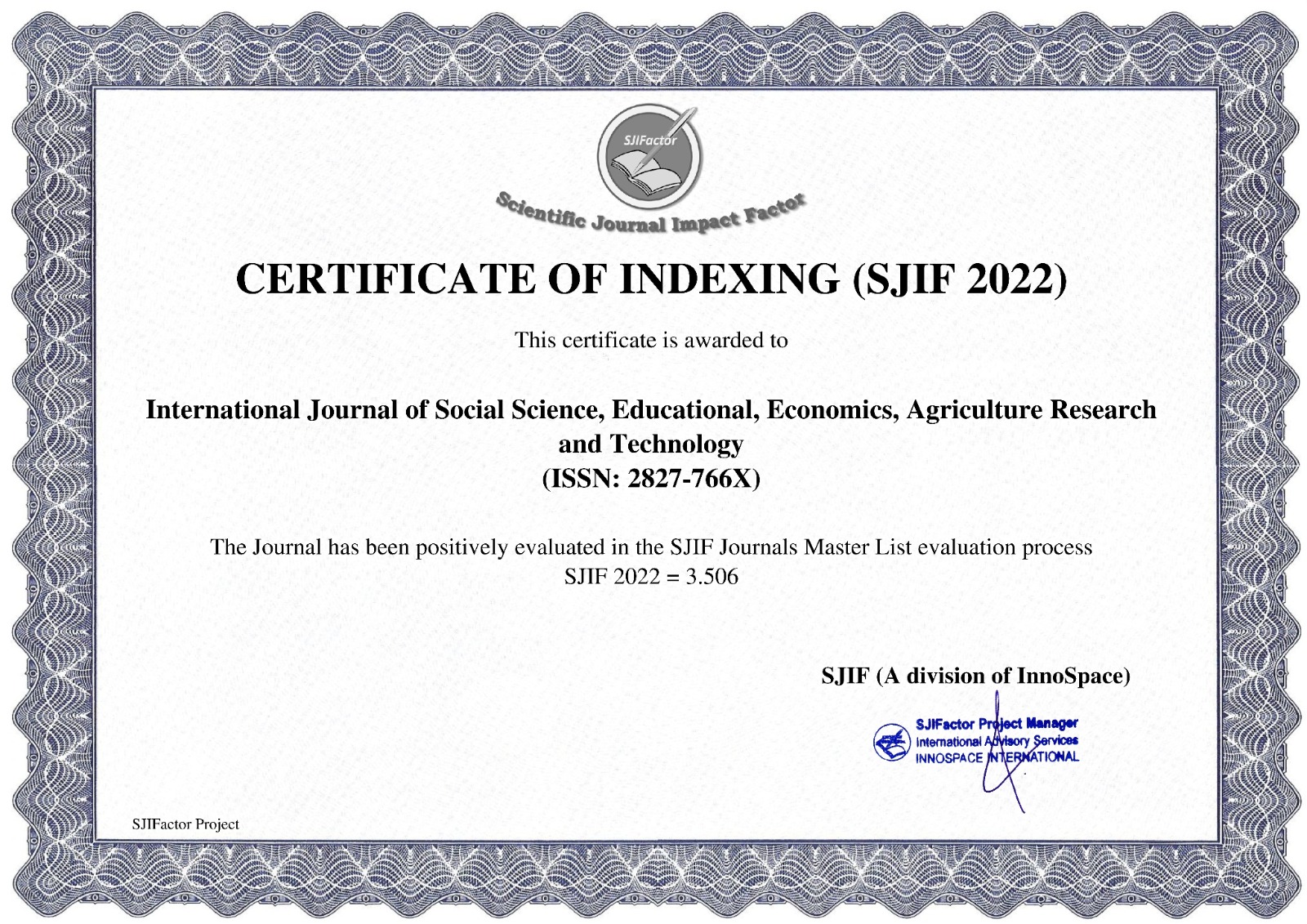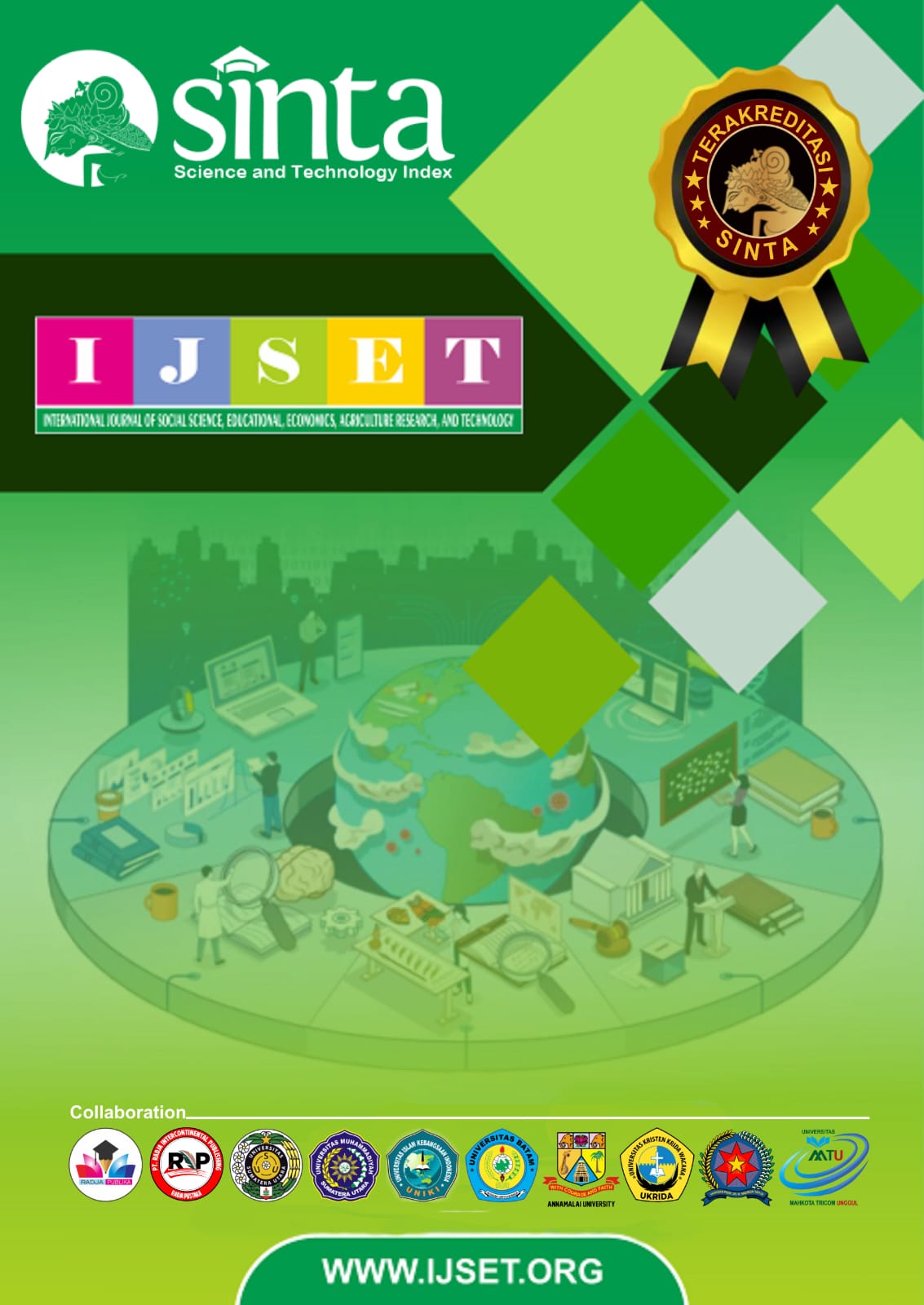DETECTING FINANCIAL REPORT FRAUD WITH PENTAGON FRAUD ANALYSIS
Main Article Content
Liza Widya Hasyim
Sujoko Waluyo
The Pentagon Fraud Theory identifies five elements that drive fraudulent behavior: pressure, opportunity, rationalization, competence, and arrogance, but their empirical relevance may vary across industries. This study aims to examine the influence of these five elements, proxied by Return on Assets, Total Receivables Ratio, Total Accrual Ratio, Director Change, and dualism of positions, on Financial Statement Fraud in banking sector companies on the Indonesia Stock Exchange. The research design used is a causal relationship study with a quantitative approach. The sample in this study was 56 trading sector companies listed on the IDX from 2021 to 2023. The type of data used in this study is secondary data. And the data analysis technique uses multiple linear regression analysis conducted with the help of Eviews software. The results in this study indicate that not all Pentagon Fraud elements are relevant in detecting financial statement fraud, highlighting the importance of a contextual and industry-specific approach in refining fraud risk assessment and contributing to the development of a more nuanced application of the Pentagon Fraud Theory in empirical research.
Abdullahi, R., Mansor, N., Kida, M. I., & Safi, N. 2016. An Empirical Analysis on the Influence of Social Conditioning and Capability toward Financial Fraud in Kano State Public Sectors. Journal of Research in Humanities and Social Sciences, 100-106
Amalia, H. F., & Triyanto, D. N. (2022). Model Fraud Pentagon Dalam Mendeteksi Kecurangan Laporan Keuangan Perusahaan Yang Terdaftar Pada Indeks IDX30 Tahun 2016-2019. EKOMBIS REVIEW: Jurnal Ilmiah Ekonomi Dan Bisnis, 10(1), 96–105.
Amara, I., Anis, B. A., & Anis J. 2013. Detection of Fraud in Financial Statements: French Companies as a Case Study. International Journal of Academic Research in Accounting, Finance and Management Sciences, Vol. 3, No. 3, 456-472-6990.
Anggraini, D., Delfiana, P. W., Hasan, K., & Purnomowati, W. (2023). Analisis Pengaruh Fraud Triangle Terhadap Laporan Keuangan (Studi Kasus Perusahaan Properti di Bursa Efek Indonesia Tahun 2018-2020). Jurnal Akuntansi STIE Muhammadiyah Palopo, 9(1), 80–100.
Aprilia, R., Syarifuddin, S., & Haerial, H. (2022). Analisis Kecurangan Laporan Keuangan melalui Fraud Hexagon. Akrual: Jurnal Bisnis Dan Akuntansi Kontemporer, 15(2), 143–151.
Association of Certified Fraud Examiners. (2022). Occupational Fraud 2022: A Report To The Nations. Association of Certified Fraud Examiners, 1–96.
Azizah, I. H., Purnamasari, P., & Maemunah, M. (2024). Pengaruh Fraud Pentagon terhadap Financial Statement Fraud. Bandung Conference Series: Accountancy, 4(1), 20–28.
Awang, Y., Ismail, S., & Abdul Rahman, A. 2015. Inclination Towards Fraud Among the Participants in Financial Reporting Process. International Conference on Accounting Studies (ICAS) 2015. Johor: International Conference on Accounting Studies (ICAS).
Ayuningrum, L. M., Murni, Y., & Astuti, S. B. (2021). Pengaruh Fraud Diamond Terhadap Kecurangan dalam Laporan Keuangan Perusahaan Manufaktur yang Terdaftar di Bursa Efek Indonesia. Jurnal Ilmiah Akuntansi Pancasila (JIAP), 1(1), 1–13.
Basmar, N. A., & Sulfati, A. (2022). Pendekatan Crowe’s Fraud Pentagon Theory Dalam Mendeteksi Kecurangan Laporan Keuangan. Jurnal Ilmiah Manajemen, Ekonomi, & Akuntansi (MEA), 6(3), 398–419.
Bawekes, Helda F. 2016. Pengujian Teori Fraud Pentagon Terhadap Fraudulent Financial Reporting (Studi Empiris pada Perusahaan yang Terdaftar di Bursa Efek Indonesia Tahun 2011-2015). Jurnal Akuntansi & Keuangan Daerah Volume 13, Nomor 1, Mei 2018: 114–134
Crowe Horwath. 2012. Why The Fraud Triangle is No Longer Enough
Gusnardi. 2009. Pengaruh Peran Komite Audit, pengendalian internal, audit internal dan pelaksanaan tata kelola perusahaan terhadap pencegahan kecurangan, universitas Riau
Nurbaiti, Z., & Hanafi, R. 2017. Analisis Pengaruh Fraud Diamond Dalam Mendeteksi Tingkat Accounting Irregularities. Jurnal Akuntansi Indonesia, Vol. 6 No. 2, 167–184
Nurjannah, Lita dan Dudi Pratomo. 2014. Pengaruh Komite Audit, Komisaris Independen dan Kualitas Audit terhadap Integritas Laporan Keuangan. E-Proceeding of Management, Vol.1, No.3: 99-105.
Priantara, D. 2013. Fraud Auditing & Investigation. Jakarta: Mitra Wacana Media.
Rachman, M. N., Suhendro, S., & Azhar, R. (2023). Analysis of factors affecting fraudulent financial reporting in fraud pentagon perspective. Asian Journal of Economics and Business Management, 2(1), 342–352.
Rachmi, F. A., Supatmoko, D., & Maharani, B. (2020). Analisis Financial Statement Fraud Menggunakan Beneish M-Score Model Pada Perusahaan Pertambangan Yang Terdaftar Di Bursa Efek Indonesia. E-Journal Ekonomi Bisnis Dan Akuntansi, 7(1), 7–12.
Ratmono, D., Darsono, D., & Cahyonowati, N. (2020). Financial Statement Fraud Detection With Beneish M-Score and Dechow F-Score Model: An Empirical Analysis of Fraud Pentagon Theory in Indonesia. International Journal of Financial Research, 11(6), 154–164.
Sanjayyana, A. R., & Urumsah, D. (2021). Factors That Influence Financial Statement Fraud and Financial Distress: an Investigation Study. ApAR: APSSAI Accounting Review, 1(1), 70–84.
Selviana, S., & Wenny, D. C. (2021). Pengaruh Audit Tenure, Ukuran Kap, dan Pergantian Auditor terhadap Integritas Laporan Keuangan (Studi Empiris pada Perusahaan Sektor Transportasi yang Terdaftar di Bursa Efek Indonesia Tahun 2017-2019). Publikasi Riset Mahasiswa Akuntansi, 2(2), 169–183.
Silham, M. H., Purnamasari, P., & Hernawati, N. (2023). Pengaruh Fraud Diamond Terhadap Fraudulent Financial Statement. Bandung Conference Series: Accountancy, 3(2), 764–769.
Sinaga, Y. D., & Arief, A. (2023). Pengaruh Fraud Diamond dan Good Corporate Governance dalam Mendeteksi Kecurangan Laporan Keuangan. Jurnal Ekonomi Trisakti, 3(2), 2633–2642
Skousen, C. J., Smith, K. R., Wright, C. J., & Chasteen Chair, L. G. (2008). Detecting and Predicting Financial Statement Fraud: The Effectiveness of The Fraud Triangle and SAS No. 99.Suryakusuma, A., & Stephanus, D. S. (2023). Pengaruh fraud Hexagon Terhadap Kecurangan Laporan Keuangan Pada Bumn Go Public Indonesia. Parsimonia-Jurnal Ekonomi Dan Bisnis, 10(2), 125–139.
Syaifudin, M. B., & Sumunar, K. I. (2022). Analisis Pengaruh Fraud Pentagon Terhadap Kecurangan Laporan Keuangan (Studi Empiris pada Perusahaan yang Terdaftar dalam Daftar LQ 45 Periode 2016-2021). JISMA: Jurnal Ilmu Sosial, Manajemen, Dan Akuntansi, 1(4), 475–486.
Tanuwijaya, V., Hiong, L. S., Louw, F., & Indah, N. (2022). Studi Teori Fraud Hexagon Terhadap Fraudulent Financial Statement pada Perusahaan yang Tergabung dalam Indeks Kompas100 di Bursa Efek Indonesia. Jurnal Maneksi (Management Ekonomi Dan Akuntansi), 11(2), 483–489.
Thalia, V., & Meiden, C. (2021). Analisis Pengaruh Fraud Diamond Dalam Mendeteksi Kemungkinan Terjadinya Fraudulent Financial Statement Terhadap Perusahaan yang Terdaftar Sebagai LQ-45 di BEI Tahun 2017-2019. Jurnal Ilmu Komputer Dan Bisnis, 12(2a), 26–47.
Wolfe, D. T., & Hermanson, D. R. (2004). The Fraud Diamond: Considering the Four Elements of Fraud. The CPA Journal, 74(12), 38–42.Yang, D., Jiao, H., & Buckland, R. (2017). The determinants of financial fraud in Chinese firms: Does corporate governance as an institutional innovation matter? Technological Forecasting and Social Change, 125, 309–320.
Yanti, D. D., & Munari. (2021). Analisis Fraud Pentagon Terhadap Kecurangan Laporan Keuangan Pada Sektor Perusahaan Manufaktur. Akuisisi, 17(1), 31–46.






















